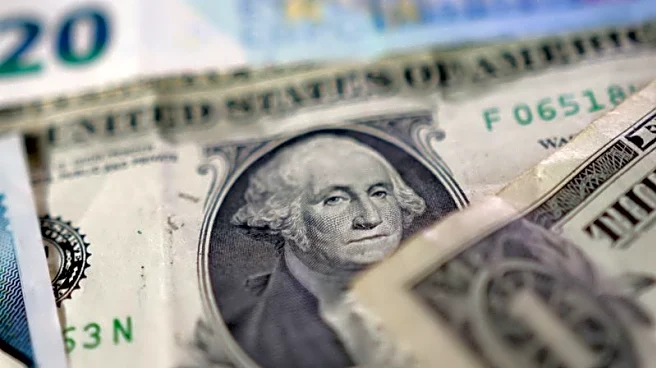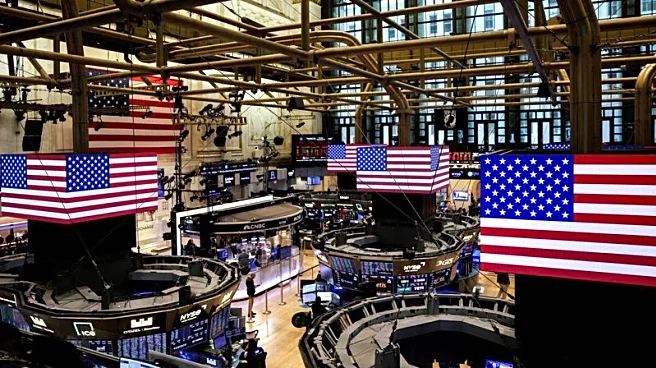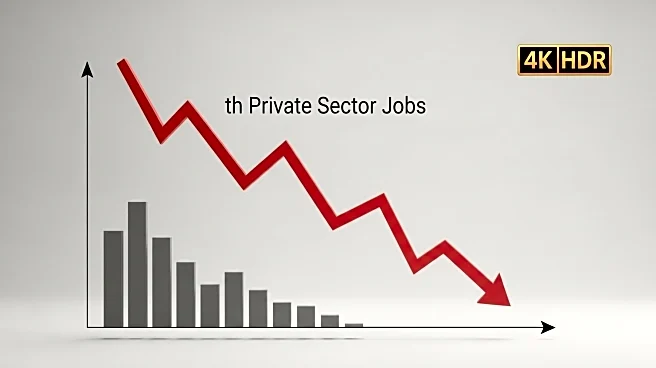What is the story about?
What's Happening?
The Federal Reserve is expected to cut interest rates further this year, following a recent 25-basis-point reduction. This decision comes amid signs of sluggishness in the U.S. labor market, as evidenced by the ADP National Employment report showing a decrease of 32,000 private payrolls in September. Traders anticipate a rate cut at the Fed's October meeting, with an 89% probability of another cut in December. Dallas Fed President Lorie Logan has indicated that while the recent rate cut was necessary to prevent a sharp deterioration in the job market, she remains cautious about further reductions. The U.S. government shutdown has added uncertainty, affecting market data releases such as the non-farm payrolls.
Why It's Important?
The potential interest rate cuts by the Federal Reserve are significant as they aim to stabilize the labor market and prevent economic downturns. Lower interest rates can stimulate economic activity by making borrowing cheaper, potentially boosting consumer spending and business investments. However, the cuts also reflect concerns about the labor market's health, which could impact economic growth. The government's shutdown further complicates the situation by delaying critical economic data releases, affecting market participants' ability to make informed decisions. The Fed's actions will be closely watched by investors and policymakers, as they could influence the U.S. economy's trajectory.
What's Next?
The Federal Reserve's upcoming meetings in October and December will be crucial in determining the future of interest rates. Market participants will be closely monitoring economic indicators and Fed officials' statements to gauge the likelihood of further rate cuts. The ongoing government shutdown may continue to impact data availability, adding uncertainty to economic forecasts. Additionally, speeches by central bank officials, including those from the ECB and Bank of England, may provide insights into global economic conditions and influence the Fed's decisions. Stakeholders will need to navigate these developments carefully to mitigate potential risks.
Beyond the Headlines
The Federal Reserve's interest rate decisions have broader implications for global financial markets. As the U.S. dollar weakens, foreign investors may face lower hedging costs, potentially affecting international investment flows. The Fed's cautious approach reflects concerns about inflation and employment, highlighting the delicate balance between stimulating growth and maintaining economic stability. The government's shutdown underscores the challenges of political uncertainty, which can disrupt economic planning and market confidence. These developments may lead to long-term shifts in monetary policy and economic strategies.
AI Generated Content
Do you find this article useful?














